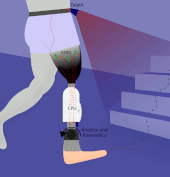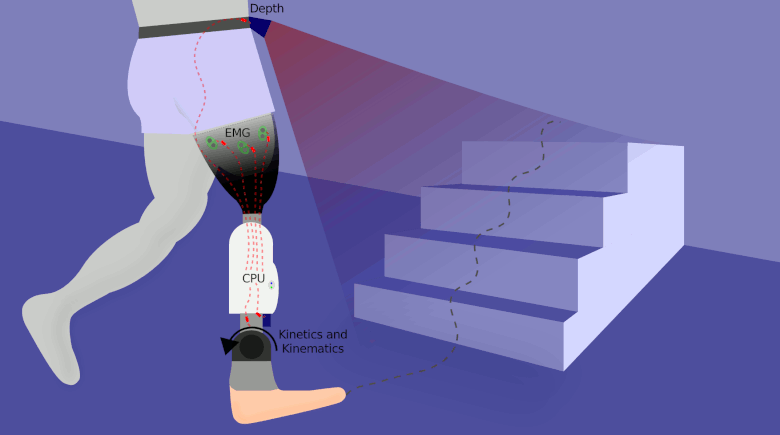We propose the addition of environmental sensing, in the form of depth sensing, to the control of powered, lower-limb prostheses. Currently, the prediction of which locomotion mode-based controller to use has been performed using EMG from the residual limb and kinetics and kinematics from the prosthesis. However, due to the variability of EMG, kinetics, and kinematics across trials, days, and subjects, it is difficult to produce robust predictions with low error rates. This work focused on the development, offline characterization, and online validation of an algorithm to detect ascending stairs in the environment, and considered the viability of such an algorithm for powered lower-limb prostheses. The algorithm uses depth information collected from an RGB-D sensor worn during ambulation, and produces an estimate of the distance to stairs, the angle of approach with the stairs, and the height, width, and depth of the stairs, as well as the stair count. These measures were all characterized and found to have good accuracy across multiple staircases and conditions. The computed estimates can then be fused to produce an estimate of when the individual is approaching stairs or not. This was performed in the online walking test, and an accuracy of >98% was obtained, with the estimates being produced at more than 5 fps. Future work will focus on how best to fuse the different sensory modalities for the highest accuracy and speed.


